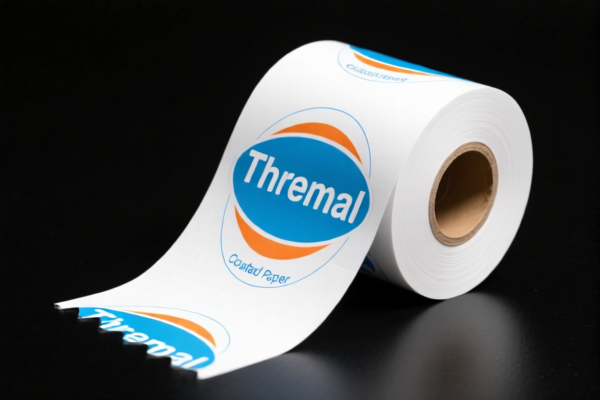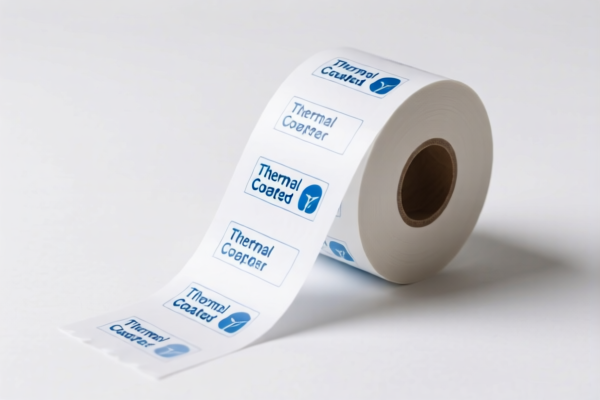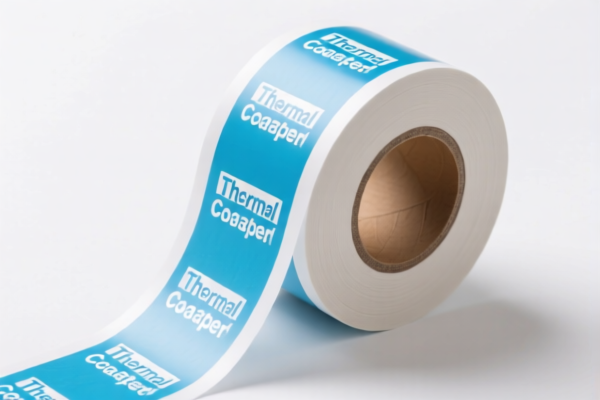| HS Code | Official Doc | Tariff Rate | Origin | Destination | Effective Date |
|---|---|---|---|---|---|
| 4016990300 | Doc | 58.0% | CN | US | 2025-05-12 |
| 8473509000 | Doc | 55.0% | CN | US | 2025-05-12 |
| 3215905000 | Doc | 56.8% | CN | US | 2025-05-12 |
| 3215901000 | Doc | 58.1% | CN | US | 2025-05-12 |
| 4821102000 | Doc | 55.0% | CN | US | 2025-05-12 |
| 4821904000 | Doc | 55.0% | CN | US | 2025-05-12 |
| 4823700020 | Doc | 55.0% | CN | US | 2025-05-12 |
| 4823901000 | Doc | 55.0% | CN | US | 2025-05-12 |
| 3919905060 | Doc | 60.8% | CN | US | 2025-05-12 |
| 3923900080 | Doc | 58.0% | CN | US | 2025-05-12 |




Thermal Paper Label
Thermal paper labels are a type of label printed using heat rather than ink or toner. These labels are widely used in various applications requiring on-demand printing, temporary labeling, and high-volume production.
Material
The primary component is a specialized paper coated with a heat-sensitive coating. This coating typically consists of a leuco dye and a color developer. When heat is applied, the chemical reaction between these components creates a visible image. The base paper can vary in weight, thickness, and quality, influencing durability and print resolution. Some thermal papers include a protective topcoat for resistance to abrasion, moisture, and certain chemicals.
Purpose
Thermal paper labels serve a range of purposes, primarily focused on:
- Product Identification: Labeling items with barcodes, serial numbers, and product descriptions.
- Shipping and Logistics: Generating shipping labels, tracking labels, and address labels.
- Point of Sale (POS): Printing receipts, order confirmations, and promotional messages.
- Temporary Labeling: Creating labels for short-term use, such as price tags or event badges.
Function
The core function relies on thermal printing technology. A thermal printhead containing heating elements selectively heats the coated paper. The heated areas undergo a chemical change, producing a dark image. There are two main types of thermal printing:
- Direct Thermal: The printhead directly contacts the paper surface. This method is faster and simpler but produces less durable images.
- Thermal Transfer: A ribbon coated with wax-based or resin-based ink is melted onto the label surface by the printhead. This method yields more durable, longer-lasting prints.
Usage Scenarios
- Retail: Price labels, shelf labels, receipt printing.
- Warehousing & Logistics: Shipping labels, inventory labels, tracking labels.
- Healthcare: Specimen labels, patient identification labels, pharmacy labels.
- Food Service: Kitchen labels, order labels, ingredient labels.
- Manufacturing: Product labels, serial number labels, component labels.
- Events: Name badges, event tickets.
Common Types
- Standard Thermal Paper Labels: General-purpose labels for various applications.
- Gap & Notch Thermal Paper Labels: Pre-spaced labels for automatic label dispensers. Gaps or notches between labels allow the printer to recognize the label start and stop points.
- Continuous Thermal Paper Labels: Uncut rolls of paper for custom label sizes.
- Pre-Printed Thermal Paper Labels: Labels with pre-printed text, logos, or barcodes.
- Removable Thermal Paper Labels: Labels with a weaker adhesive for easy removal.
- Water-Resistant Thermal Paper Labels: Labels with a protective coating for resistance to moisture.
- Freezer Thermal Paper Labels: Labels designed to withstand low temperatures.
- Thermal Transfer Labels: Require a ribbon for printing and provide higher durability.
Thermal paper label can be classified under several HS codes based on its specific characteristics and application. Here's a breakdown of potential classifications:
- 4821102000: This HS code covers Paper and paperboard labels of all kinds, whether or not printed: Printed: Printed in whole or in part by a lithographic process. If the thermal paper label is printed using a lithographic process, this code applies. The first two digits (48) indicate the chapter for paper and paperboard. The next four digits (2110) specify labels, and the final two digits (20) denote those printed by lithography.
- 4821904000: This HS code covers Paper and paperboard labels of all kinds, whether or not printed: Other: Other. If the thermal paper label is not printed by a lithographic process, or falls into a category not specifically defined, this code is applicable. The first two digits (48) indicate the chapter for paper and paperboard. The next four digits (2190) specify labels, and the final two digits (40) denote other labels.
- 4823700020: This HS code covers Other paper, paperboard, cellulose wadding and webs of cellulose fibers, cut to size or shape; other articles of paper pulp, paper, paperboard, cellulose wadding or webs of cellulose fibers: Molded or pressed articles of paper pulp Plates, bowls or cups. If the thermal paper label is molded or pressed, this code may apply. The first two digits (48) indicate the chapter for paper and paperboard. The next four digits (2370) specify molded or pressed articles, and the final two digits (20) denote plates, bowls or cups.
- 4823901000: This HS code covers Other paper, paperboard, cellulose wadding and webs of cellulose fibers, cut to size or shape; other articles of paper pulp, paper, paperboard, cellulose wadding or webs of cellulose fibers: Other: Of paper pulp. If the thermal paper label is made of paper pulp and doesn't fall into other specific categories, this code may be applicable. The first two digits (48) indicate the chapter for paper and paperboard. The next four digits (2390) specify other articles, and the final two digits (10) denote those made of paper pulp.
According to the provided reference material, the HS code options related to 'thermal paper label' are limited, with only the following 4 found.
The total tax rate for 4821102000 and 4821904000 is 55.0%. The total tax rate for 4823700020 and 4823901000 is 55.0%.
Customer Reviews
No reviews yet.